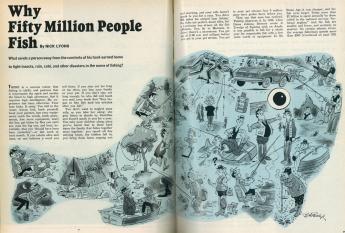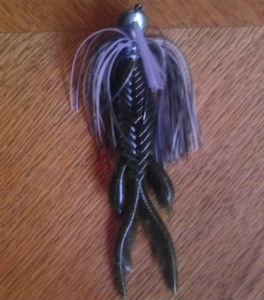THE PYLON
Question
IS THE ENTIRE PYLON CONSIDERED TO BE PART OF THE GOAL LINE ?
Answer
The following is an officiating philosophy - Exploding Pylon
If a runner approaches the pylon marking the goal line, and there is an explosion (ball/player/pylon) in the process of getting tackled near the sideline, don't nitpick. It is a touchdown. We are not good enough to mark it at the 6-inch line, and we have no replay to tell us if we're right or wrong. Chances are, it is a touchdown anyway. Make the pylon in the end zone!
John,
I happened to notice you asked a question several weeks ago and the question was sent to th equestion pool. I wish you would have asked me the question directly I would have answered it sooner. Hope this answer helps.
The simple answer to your question is No.
The pylon marks the intersection of th egoalline and the sideline. Technically it is not considered the goalline but an indication of the goaline's intersection. The pylon is better considered part of the sideline since a player or an airborne player who touches a pylon is out of bounds.
A player or an airborne player is out of bounds when any part of his person touches anything, other than another player or game official, on or outside a boundary line - A player or an airborne player who touches a pylon is out of bounds. It is a touchdown if the ball is inbounds and has broken the plane of the goal line before or simultaneous to the ball carrier going out of bounds or touching th epylon. So if there is a simultaneous touching og the pylon with the ball, that will be considered a touchdown.
Here are some examples of play situations to help understand that is and is not a touchdown when the plane of the goalline or pylon is involved [they are taken from my study notes, NCAA memos and approved rulings]:
1) Ball carrier A22 strikes the pylon at the right intersection of the sideline and Team B抯 goal line. He carries the ball in his right arm so that the ball is extended over the sideline. (a) The ball penetrates the plane of the goal extended (i.e., outside the pylon) before A22 touches the pylon. (b) A22 touches the pylon before the ball breaks the plane of the goal line extended. RULING: (a) Touchdown. The ball is still alive when it breaks the goal-line plane which is extended for a ball carrier. (b) Not a touchdown. The ball becomes dead when A22 touches the pylon and belongs to Team A at the forward-progress point.
2) Fourth-and-goal at the five-yard line. Runner A22 runs toward the sideline and becomes airborne as he crosses the goal line pylon. Ruling: The position of the ball in the runner's possession as it crosses the sideline determines forward progress. It is a touchdown if the ball crosses over or beyond the pylon.(4-2-4-e).
3) Runner A39 dives toward Team B's goal line. He extends the ball, which touches the pylon, as his foot touches the sideline. RULING: Touchdown (Rule 5-1-3-a).
4) Ball carrier A22 is running near the sideline in an attempt to score. At the B-1 he goes airborne by leaping such that the ball passes across the goal line extended outside the pylon. A22
lands out of bounds beyond the goal line extended. RULING: Not a touchdown. The goal line is not extended for an airborne player, i.e., one who leaves the ground voluntarily. The ball is out of
bounds at the point where it crossed the sideline. (2-11-2, 4-2-4-e, AR 8-2-1-IV)
I. The ball carrier is thrown or falls to the ground on his opponent抯 one-yard line, but his momentum causes him to slide across the goal line. RULING: Not a touchdown unless the ball抯 forward point was on, above or across the goal line when any part of the ball carrier抯 body except his hand or foot struck the ground (Rules 4-1-3-b and 5-1-3).
II. Ball carrier A1, while attempting to score, strikes the pylon located on the right intersection of the goal line and sideline with his foot. He is carrying the ball in his right arm, which is extended over the sideline. RULING: Whether or not a touchdown is scored depends on the forward progress of the ball as related to the goal line when the ball becomes dead by rule (Rules 4-2-4-d and 5-1-3-a).
III. Ball carrier A1, advancing in the field of play, becomes airborne at the two-yard line. His first contact with the ground is out of bounds three yards beyond the goal line. The ball, in possession of the ball carrier, passed over the pylon. RULING: Touchdown (Rule 4-2- 4-e).
IV. The ball, in possession of airborne ball carrier A21, crosses the
sideline above the one-yard line, penetrates the plane of the goal line extended and is then declared dead out of bounds in possession of A21. RULING: Ball is declared out of bounds at the one-yard line (Rules 2-11-1 and 4-2-4-e).
Pylons are defined as - Soft, flexible four-sided pylons 4 inches by 4 inches with an overall height of 18 inches, which may include a 2-inch space between the bottom of the pylon and the ground, are required. They shall be red or orange in color and placed at the inside corners of the eight intersections of the sidelines with the goal lines and end lines. The pylons marking the intersections of the end lines and inbounds lines extended shall be placed three feet off the end lines.
dead ball
can the center just hike the ball??


